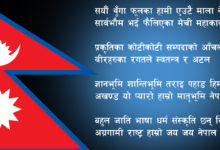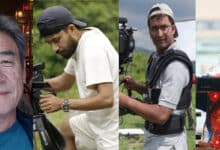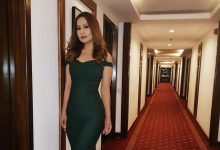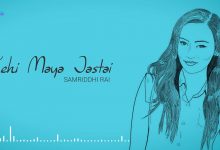Nepali Musical Instruments
List of musical instruments of Nepal. Arbajo. Babucha. Baya. Binayo. Chusyah. Dafali. Dakkari. Bansuri, a bamboo flute, a murali.
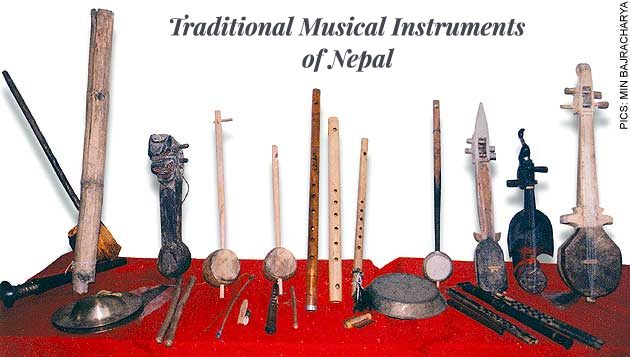
Nepali Musical Instruments produce melodious sounds. The music is also the complement of songs. To make the songs pleasant music has a great role. In Nepal, people use many musical instruments and sing songs during festivals, marriage ceremonies, Jatras, and other cultural programs. Here are some of the traditional Nepali musical instruments, let’s discuss them.
The Newars are very much rich in traditional, classical, and folk music as in dances. Various music and dance events take place in different parts of Newar societies on the occasion of different festivals. Various songs, musical instruments, and dances are connected with the various religious, social, and cultural life of the Newars Different musical instruments are in practice in the festival, feasts, ceremonies, and also in a funeral procession.
A folk instrument is a musical instrument that developed among common people and usually does not have a known inventor. It can be made from wood, metal or other material. Such an instrument is played in performances of folk music.
Musical Instruments Type.
It is believed that there are about 200 (two hundred) types of original musical instruments in Nepal. 108 (one hundred eight types) of musical instruments have been found till now. These Nepali musical instruments can be classified into four classes according to Sangeet Shastra.
Membranophones
Dhimay
Dhimay is the most common Nepali musical instruments amongst the Newars. It is considered as the oldest musical instruments amongst the membranophones. Even though there is no evidence that Mahadeva invented these instruments (as legend says) but there is evidence to support that it dates back to Kirat period.
Dhah
Gunla ( a month according to Nepal Era ) is taken as a Buddhist holy month. As Dhah is played during Gunla it is also termed as ‘Gunla Bajan’. It looks similar to Dhimay but is Slightly smaller than Dhimay. Dhah is constructed from a cylindrical hollowed tree trunk slightly smaller than that of Dhimay.
The tuning paste is stuck at the inner side of Mankah. Tuning paste is made of castor seeds, mustard oils etc. Besides in the Gunla month, Dhah is also practiced in different dances and other different festivities. Dhah is accompanied with Bhusyah (pair of cymbals), Tah (smaller cymbals), Muhali (clarinet/trumpets) or Bansuri (flute ). Ponga is also played in Bhairab dance of Thimi.
Paschima
Myth says, Paschima was invented by lord Krishna. This instrument is also known as Mridanga. It is a double headed drum with tuning paste in on hide (Nasah) and dough made of wheat flour is plastered in the other hide (Mankah) before playing. Paschima is accompanied with Baboocha (thinner cymbals), Tah (thicker cymbal), Muhali (shwam) or Bansuri (flute).
Nayakhin
It is another musical instrument used in many rituals. This instruments is mainly played by the Khadgis, however, this instrument is also played by other castes. It is also called as ‘NayaKhin’ or ‘Dyah Khin’. Since it is also played in funeral processions it is also known as ‘Seeh Bajan’ (funeral drum). Long long ago, there was a tradition to play fanfare on NayaKhin to proclaim the news. In the Malla period, proclaiming by beating of NayaKhin was widely spread. The NayaKhin looks similar to Dhah but it is smaller. It is constructed from hollowed tree trunk of an average size of 14″ length and 7″ diameter.
DapaKhin
DapaKhin has various names: Yakah Khin, Joh khin, Lala Khin, Deshi Khin, for instance. It is double headed drum with tuning paste in both hides. Dapa Khin is mainly played in Dapa Bhajans (traditional hymns). If a single Khin is played it is called Yakah Khin and if two Khins are played, they are called as ‘Joh Khin’. Dapa Khin is accompanied with Tah, Baboo and Bansuri (flute) or Muhali (Shwam).
Koncha Khin
Koncha Khin is single headed drum resembling Tabla. It is also termed as ‘Khicha Khwah Khin’ as it is said that dogs start to cry when Koncha Khin is played. Koncha Khin is mainly played in marriage processions and accompanied with baboo, Tah and Baya or Muhali.
Dholak
Dholak resembles Dhah in structure and its playing techniques are similar to that of Paschima. Dholak is played in Dhalcha Bhajans and also accompanies Bansuri.
KantanDabDab
Also known as Damaru, it is a small two-headed drum with straps. It is the instrument played by lord Shiva. KantanDabDab is especially played during Mohani Festival.
Magah Khin
This two headed drum with tuning paste at both ends belongs to magar community, however it has become an important part in Newar folk music. It is said that there are fifty four talas of Magah Khin. It is commonly known as Madal.
Daha
Daha, or a tambourine is a percussion instrument played in Bansuri Bajan or Khin Bajan. It is also used whilst singing songs and in Bhajans.
Dhangro
Though it is not a Newar instrument it has become an integral part in many rituals. Dhyangro is basically played by Jhankris(Witch Doctors) or Kirats.
Aerophones
Muhali
Muhali is a conical bore shawm, which is played only by Jugi (Kusle) caste. Jugis are given Khanki (land) for playing Muhali in various occasions. There is a tradition to play Muhali everyday in Phalchas ,i.e. roofed rest places, which tradition is also known as Siwa Yayegu.
Muhali accompanies Dhah, Dapha Khin, Paschima, Nagara and others. Muhali solo is played in Digu puja.
Bansuri (flute)
Bansuri is a woodwind instrument which accompanies mainly Paschima, Dapha Khin or Koncha Khin. Basuri are of three kinds: Ghor, Majhawala and Teep, producing low, middle and high tones.
Baya
Baya resembles Bansuri but they are different in construction and playing techniques. Baya accompanies mainly Koncha Khin. Koncha Khin and Baya are played in marriage procession.
Ponga
Also known as Payantah, Ponga is a long wind instrument made of brass. Pongas are made by Tamoh or Tamrakar (Newar Coppersmith). It accompanies Kwatah Khin and it is also played in Bhailah Pyakhan (Bhairab Dance). [Audio]
Kaha
Kaha resembles Ponga. It is also known as Indra Baja and it is believed to be invented at the time of Manju Shree. It is played with Naya Khin In many festivals nd also playd in funeral processions. There is a typical caste, called Kabuja, who play Kaha.
Nekoo
Nekoo or horn instrument is the oldest form of musical instruments in the globe. It is played during Gunla month. There are various types of Nekoo, Chatti Nekoo, Thika Nekoo, for instance.
Sankha
Sankha or konch is an ancient instrument. Playing of Sankha indicates starting of any new work. Sankha is played in ‘MahGhah Wonegu’ in dec-jan month. It is also played in different worships.
Idiophones
Tah
The word ‘Tah’ comes from ‘ Tala ‘ which is derived from ‘Tandava’ and ‘Lasya’. Tah controls Tandava and Lasya of Music. It controls whole rythm of music. Tah is considered as the principle musical instruments among all Newar musical instruments.
Tah, apair os thicker cymbal, is made of Asta Dhatu (an alloy of eight holy metals). It accompanies Dhah, Dapha Khin, Paschima, Koncha Khin, Naya Khin (when played as Gunla Bajab) and others. [Audio]
Baboocha
It is thinner than Tah, however, it is bigger in size. It is also made of Asta Dhatu. It accompanies Dapha Khin, Pachima, Koncha Khin, Dholak and others.
Chhusyah
Also known as Sichhya, Chhusyah resembles Baboocha but is bigger in size. It accompanies Naya Khin, Nagara and others.
TainNain
TainNain is a gong, it is played by striking with a stick. It accompanies Dhimay.
TiniMuni
It is a percussion instrument consisting of a steel rod bent in the shape rod a triangle. It is played by striking with another steel rod. It is played in Dhalcha Bhajans.
Gan
Gan or a bell play a vital role in ceremonial worships such as Shradh, Janko, Ihi and so on. There are various types of bells in practice: Big, Small, Wind bell, Bajra Ghanta, for instance.
Chordophones
Piwancha
Piwancha is a two or three-stringed instrument. It is especially played by jyapu (Newar farmers). Unfortunately, it has been extinct.


